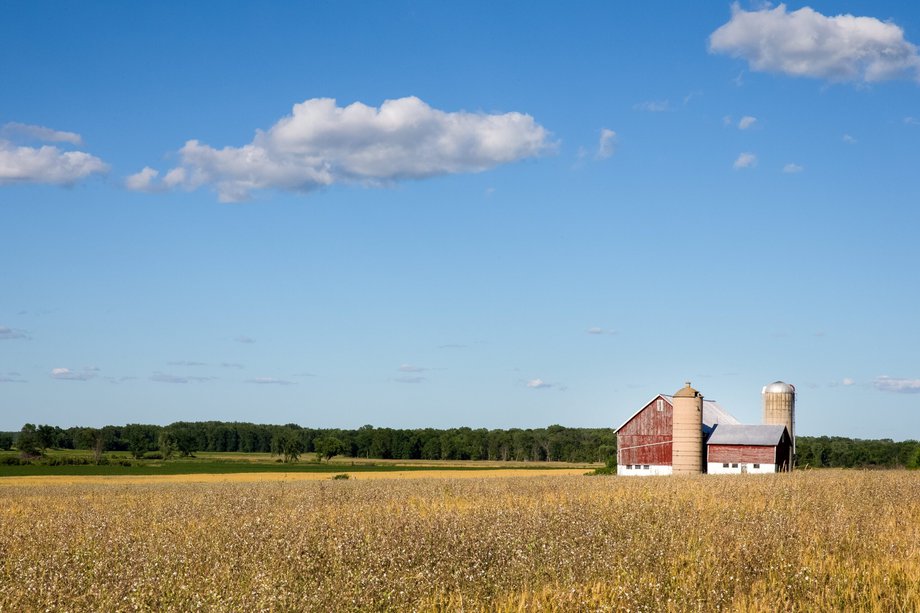What Is the Impact of Medicaid Expansion on Rural Communities

Are you curious about the effects of Medicaid expansion on rural communities?
Discover how this initiative impacts your community by improving access to healthcare services, providing financial relief for residents, and increasing the availability of healthcare providers.
Additionally, learn about the potential strain on rural healthcare systems and the long-term sustainability of Medicaid expansion.
Gain a deeper understanding of the positive changes and challenges that come with this program, ultimately serving and benefiting you and your fellow community members.
Key Takeaways
- Medicaid expansion has the potential to improve access to healthcare services in rural communities by providing financial relief and coverage for preventive care services, prescription medications, and catastrophic medical expenses.
- The increased availability of healthcare providers in rural areas, along with the integration of telehealth services, can enhance the quality of care and improve health outcomes in underserved populations.
- However, there may be potential strains on rural healthcare systems due to increased demand for services, difficulty in attracting and retaining healthcare professionals, financial burden on hospitals and clinics, and an imbalance in the distribution of healthcare resources favoring urban areas.
- To ensure the long-term sustainability of Medicaid expansion in rural areas, strategic investments in healthcare infrastructure, efforts to attract healthcare professionals to rural areas, and collaborative partnerships between government, healthcare organizations, and community stakeholders are crucial.
Access to Healthcare Services
Access to healthcare services is crucial for individuals living in rural communities. In these areas, it can be challenging for people to access the medical care they need due to transportation barriers and limited healthcare facilities.
However, with the advancement of technology, telemedicine options have emerged as a potential solution. Through telemedicine, individuals in rural communities can connect with healthcare professionals remotely, allowing them to receive medical advice, consultation, and even treatment without the need for long-distance travel. This not only helps overcome transportation barriers but also ensures timely access to healthcare services.
Telemedicine options can greatly benefit individuals in rural communities, providing them with the care they need, improving health outcomes, and ultimately enhancing the overall well-being of these underserved populations.
Financial Relief for Rural Residents
With the expansion of Medicaid, you can now expect financial relief for rural residents, alleviating the burden of healthcare costs in these underserved areas. This expansion brings several economic benefits and improves healthcare affordability, ensuring that rural residents can access the care they need without worrying about exorbitant expenses.
Here are five key ways in which Medicaid expansion provides financial relief for rural residents:
- Reduced out-of-pocket costs: Medicaid expansion lowers the amount individuals have to pay for healthcare services, making it more affordable for rural residents.
- Increased access to preventive care: With Medicaid, rural residents can now receive preventive services, such as screenings and vaccinations, at no or low cost. This helps to identify and address potential health issues before they become more serious and costly.
- Expanded coverage for prescription medications: Medicaid expansion includes coverage for prescription drugs, ensuring that rural residents can afford necessary medications to manage their health conditions.
- Financial protection against catastrophic medical expenses: Medicaid expansion provides rural residents with insurance coverage that safeguards them from the financial devastation of unexpected medical emergencies.
- Strengthened local healthcare systems: By increasing the number of insured rural residents, Medicaid expansion helps support the financial viability of local healthcare providers, ensuring their continued presence and accessibility in underserved areas.
Medicaid expansion brings much-needed relief to rural residents by reducing healthcare costs, improving affordability, and strengthening local healthcare systems. This enables rural communities to prioritize their health and well-being without the fear of financial hardship.
Increased Healthcare Provider Availability
You can now expect an increase in the availability of healthcare providers in rural areas due to Medicaid expansion. This expansion has led to an improved workforce in these underserved regions, ensuring that more healthcare professionals are available to tend to the needs of rural communities. Additionally, the integration of telehealth services has further enhanced access to healthcare in remote areas. Telehealth allows patients to remotely connect with healthcare providers through video consultations, ensuring that they receive the necessary medical attention without the need for travel. This integration of telehealth technology has not only increased the availability of healthcare providers but also improved the overall quality of care in rural communities. With Medicaid expansion and telehealth integration, serving the healthcare needs of rural residents is becoming more attainable and efficient.
| Benefits of Increased Healthcare Provider Availability in Rural Areas | |
|---|---|
| Improved Workforce | Telehealth Integration |
| – More healthcare professionals available | – Remote access to healthcare providers |
| – Enhanced access to care | – Efficient and convenient consultations |
| – Better quality of care | – Reduced need for travel |
Improved Health Outcomes
Medicaid expansion in rural communities has led to improved health outcomes through two key factors: reduced healthcare disparities and increased access to care.
With Medicaid coverage, individuals who were previously uninsured or underinsured now have the means to seek timely and necessary medical treatment, resulting in better overall health outcomes.
Additionally, by reducing financial barriers to healthcare, Medicaid expansion helps to bridge the gap between low-income individuals and essential healthcare services, ultimately leading to healthier rural communities.
Reduced Healthcare Disparities
Since the implementation of Medicaid expansion, rural communities have experienced a significant reduction in healthcare disparities, leading to improved health outcomes. Here are five ways in which this has been achieved:
- Increased access to healthcare services: Medicaid expansion has provided rural communities with greater access to medical facilities, doctors, and specialists, ensuring that individuals receive the care they need in a timely manner.
- Improved preventive care: With expanded coverage, more individuals in rural areas now have access to preventive care services, such as screenings, vaccinations, and regular check-ups. This helps to detect and address health issues early on, leading to better health outcomes.
- Reduced financial burden: Medicaid expansion has relieved the financial strain on rural residents, making healthcare more affordable and allowing them to seek necessary treatments without worrying about excessive expenses.
- Enhanced chronic disease management: By expanding Medicaid, rural communities have seen an improvement in the management of chronic diseases, such as diabetes, hypertension, and heart disease, as individuals now have the resources to effectively manage their conditions.
- Increased health awareness and education: Medicaid expansion has facilitated health education programs in rural areas, promoting awareness about healthy lifestyles, disease prevention, and the importance of regular healthcare visits.
These changes have brought about a more equitable healthcare system and improved health outcomes for individuals in rural communities.
Increased Access to Care
One major benefit of Medicaid expansion for rural communities is the increased access to healthcare services, resulting in improved health outcomes. With Medicaid expansion, more individuals and families in rural areas gain access to affordable healthcare services that were previously out of reach.
This increased access to care means that people can receive necessary medical treatments and preventive care, leading to improved healthcare outcomes. Regular check-ups, screenings, and early interventions can help detect and address health issues before they become more serious and costly to treat.
Potential Strain on Rural Healthcare Systems
How can Medicaid expansion impact rural healthcare systems?
While Medicaid expansion aims to increase access to care in rural communities, it can also potentially strain the already limited resources and exacerbate the healthcare workforce shortage.
Here are some ways in which Medicaid expansion can impact rural healthcare systems:
- Increased demand for healthcare services, overwhelming the existing infrastructure and resources.
- Difficulty in attracting and retaining healthcare professionals due to lower reimbursement rates.
- Overcrowding in hospitals and clinics, leading to longer wait times for appointments and decreased quality of care.
- Financial burden on rural hospitals and clinics, potentially leading to closures and limited access to healthcare.
- Imbalance in the distribution of healthcare resources, with urban areas receiving more attention and leaving rural communities underserved.
It is crucial to carefully evaluate the potential strain on rural healthcare systems when considering Medicaid expansion to ensure that the benefits outweigh the challenges and that adequate support is provided to sustain quality healthcare in rural communities.
Long-Term Sustainability of Medicaid Expansion in Rural Areas
To ensure the long-term sustainability of Medicaid expansion in rural areas, you need to address the challenges of limited resources and workforce shortage. Rural communities often face funding challenges, with limited financial resources available to support healthcare services. This can lead to difficulties in providing adequate healthcare access and quality of care for Medicaid beneficiaries. Additionally, rural areas frequently struggle with a shortage of healthcare professionals, including doctors, nurses, and specialists. This workforce shortage can further strain the healthcare system and make it challenging to meet the needs of an expanded Medicaid program. To overcome these obstacles, strategic investments in healthcare infrastructure and workforce development are essential. By focusing on improving funding mechanisms and attracting healthcare professionals to rural areas, the long-term sustainability of Medicaid expansion can be ensured.
| Funding Challenges | Workforce Shortage |
|---|---|
| Limited financial resources make it difficult to support healthcare services. | A shortage of healthcare professionals, including doctors, nurses, and specialists, is a common challenge in rural areas. |
| Insufficient funds may result in inadequate healthcare access and quality of care for Medicaid beneficiaries. | The workforce shortage can strain the healthcare system and make it challenging to meet the needs of an expanded Medicaid program. |
| Strategic investments in healthcare infrastructure are necessary to overcome funding challenges. | Attracting healthcare professionals to rural areas is crucial for addressing the workforce shortage. |
| Improving funding mechanisms can help ensure long-term sustainability of Medicaid expansion in rural areas. | Investing in workforce development programs can help alleviate the shortage of healthcare professionals. |
| Collaborative efforts between government, healthcare organizations, and community stakeholders are vital for addressing funding challenges. | Partnerships with educational institutions can support the recruitment and training of healthcare professionals in rural areas. |
Frequently Asked Questions
What Are the Specific Healthcare Services That Will Be Made More Accessible Through Medicaid Expansion in Rural Communities?
In rural communities, Medicaid expansion will make specific healthcare services more accessible. This means that you will have easier access to essential medical care, such as preventive screenings, vaccinations, and treatment for chronic conditions.
How Will the Financial Relief Provided to Rural Residents Through Medicaid Expansion Be Funded?
Funding sources for the financial relief provided to rural residents through Medicaid expansion include federal and state funds. This ensures the financial sustainability of the program, allowing more people in rural communities to access affordable healthcare services.
Will the Increased Availability of Healthcare Providers in Rural Areas Be Sustainable in the Long Term?
You may be wondering if the increased healthcare access in rural areas will be sustainable in the long term. Rest assured, the expansion of Medicaid will help ensure that healthcare providers can continue serving rural communities for years to come.
Are There Any Specific Health Outcomes That Have Shown Significant Improvement in Rural Areas as a Result of Medicaid Expansion?
Specific health outcomes in rural areas have shown significant improvement due to Medicaid expansion. Access to healthcare providers has increased, leading to better preventive care, reduced hospitalizations, and improved overall health outcomes for individuals in these communities.
How Will Medicaid Expansion Impact the Overall Sustainability of Rural Healthcare Systems in the Long Run?
In the long run, Medicaid expansion can have a positive impact on the overall sustainability of rural healthcare systems. It improves healthcare accessibility, ensuring that people in rural areas have access to necessary medical services.









